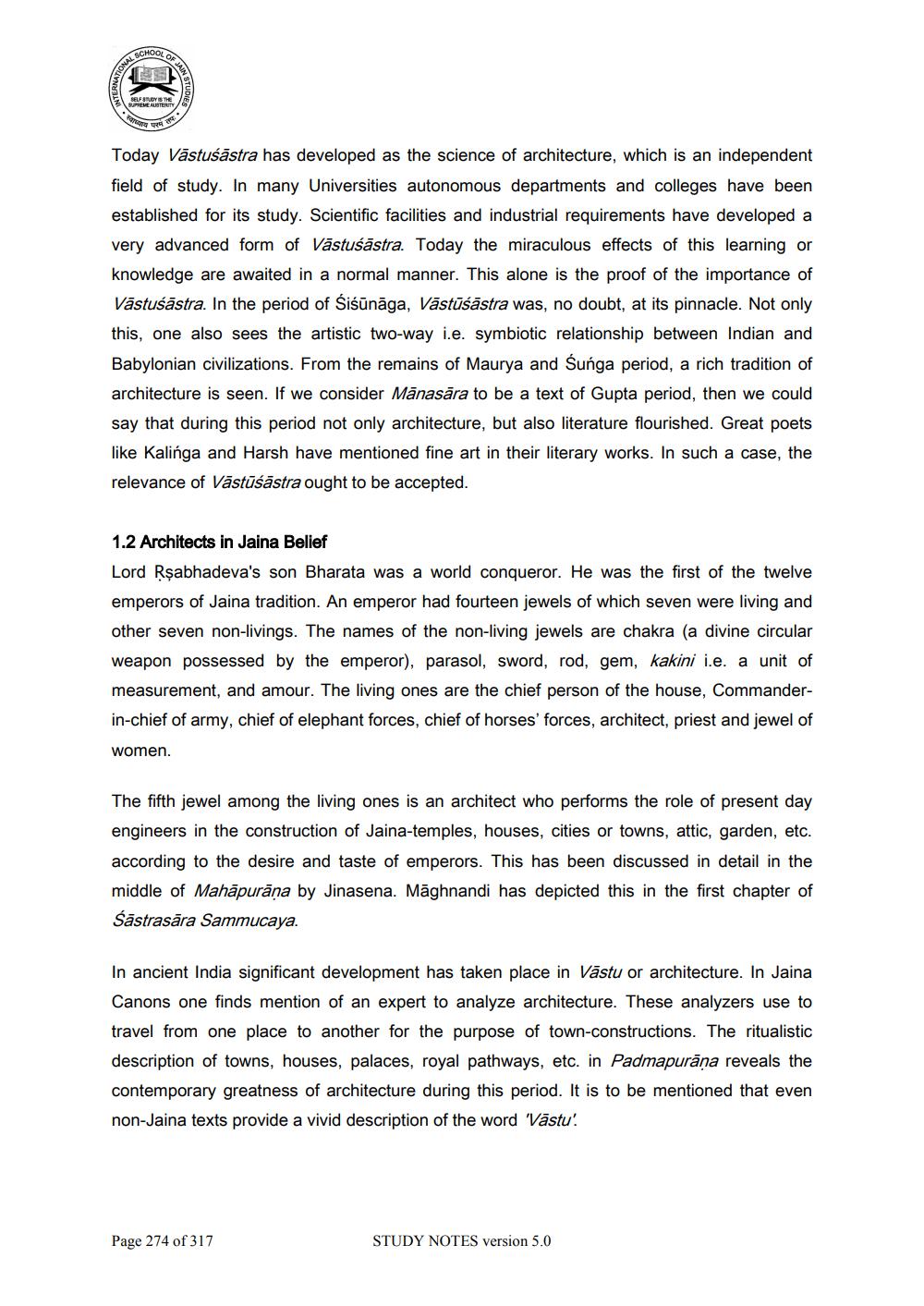________________
Today Vāstuśāstra has developed as the science of architecture, which is an independent field of study. In many Universities autonomous departments and colleges have been established for its study. Scientific facilities and industrial requirements have developed a very advanced form of Vāstuśāstra. Today the miraculous effects of this learning or knowledge are awaited in a normal manner. This alone is the proof of the importance of Vastuśāstra. In the period of Siśūnāga, Västāśāstra was, no doubt, at its pinnacle. Not only this, one also sees the artistic two-way i.e. symbiotic relationship between Indian and Babylonian civilizations. From the remains of Maurya and Śunga period, a rich tradition of architecture is seen. If we consider Mānasāra to be a text of Gupta period, then we could say that during this period not only architecture, but also literature flourished. Great poets like Kalinga and Harsh have mentioned fine art in their literary works. In such a case, the relevance of Vāstūśāstra ought to be accepted.
1.2 Architects in Jaina Belief Lord Rşabhadeva's son Bharata was a world conqueror. He was the first of the twelve emperors of Jaina tradition. An emperor had fourteen jewels of which seven were living and other seven non-livings. The names of the non-living jewels are chakra (a divine circular weapon possessed by the emperor), parasol, sword, rod, gem, kakini i.e. a unit of measurement, and amour. The living ones are the chief person of the house, Commanderin-chief of army, chief of elephant forces, chief of horses' forces, architect, priest and jewel of
women.
The fifth jewel among the living ones is an architect who performs the role of present day engineers in the construction of Jaina-temples, houses, cities or towns, attic, garden, etc. according to the desire and taste of emperors. This has been discussed in detail in the middle of Mahāpurāņa by Jinasena. Māghnandi has depicted this in the first chapter of Šāstrasāra Sammucaya.
In ancient India significant development has taken place in Vāstu or architecture. In Jaina Canons one finds mention of an expert to analyze architecture. These analyzers use to travel from one place to another for the purpose of town-constructions. The ritualistic description of towns, houses, palaces, royal pathways, etc. in Padmapurāņa reveals the contemporary greatness of architecture during this period. It is to be mentioned that even non-Jaina texts provide a vivid description of the word 'Vāstu!
Page 274 of 317
STUDY NOTES version 5.0




